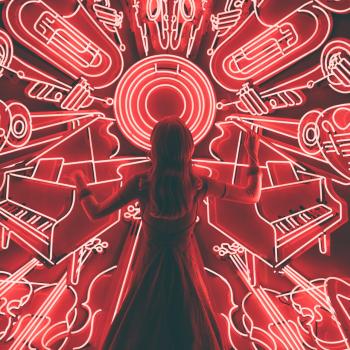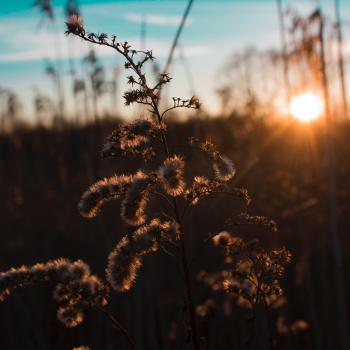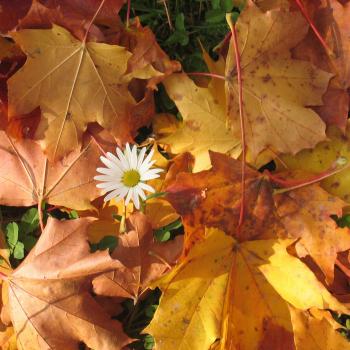How UUs Relate to the Three Worlds
Unitarian Universalists, in general, are very comfortable in the Middle world, and strongly identified with the Namer. (I know this does not apply to all UUs, but in my experience, this is part of UU culture, and is a true description of many UUs, including, at times, myself.) Just think about the way UUs love words, and the ways we can quibble endlessly about their precise meaning and use. When I was a kid, a common saying about UU worship was that it was good because, “you don’t have to leave your brain at the door.” That veneration of reason and rationality is also a hallmark of the Namer self. I also appreciate these things about UUism, and am a UU partly because there is a part of me that resonates deeply to reason, organization, precision, the power of language, and the other loves of the Namer self.
To a lesser extent, UUs are also okay with the Watcher self. Many UUs practice forms of Buddhist meditation, whether they identify as Buddhists or not. That detached compassion is something many UUs cultivate. The calm center, the long view, the part of us that can truly understand and apply the Principle of the worth and dignity of all, these are things we UUs as a whole appreciate and strive for, even if we aren’t always able to act from this place.
But when it comes to the Shaper, the underworld, the part of us that is deeper than rationality and marked by a love of things we feel but can’t quite explain, UUs are much less comfortable, in general. As a people, we struggle with this. And this is where I think the Pagan UU community has something important to offer to the larger UU world.
Pagan ritual as I have experienced it is deeply resonant with the Shaper. The Shaper, unlike the Namer, would really like us to leave our brains at the door when we come to worship. It would like worship to be a sensory and emotional experience that takes us to visit the Underworld, rather than an experience where thought has center stage. And this is often what Pagan ritual does. The rituals I have experienced are rich with symbolism, sensory experiences of many kinds, ritual drama and storytelling, and various ways of inducing trance states, all of which are the beloved playthings of the Shaper.
If Pagan UUs can offer worship that has these hallmarks, perhaps we can help our larger religious community to better integrate the part of ourselves that dwells in the spaces deeper than the earth and more intuitive than rational.
Of course, designing such worship for Unitarian Universalist contexts can be a challenge. However, it can be done. Knowing consciously that your goal is to connect people to the Underworld and to the Shaper can help, even if you never tell anyone that that’s what you’re doing. The stories of transformation can be a powerful aid. Symbols of death and rebirth, even if they are alluded to only in passing or in veiled references will still resonate on a level below awareness.
One powerful tool for connecting with the Underworld is to place the Elements in a particular pattern when calling the directions.
Most Wiccan sources I’ve seen place the elements in the following pattern: Earth in the North, Air in the East, Fire in the South, Water in the West. The first time I went to a Temple ritual, I was surprised that we switched Air and Fire, with Fire appearing in the East and Air in the South. When I learned more, I learned that this arrangement has strong associations to the Underworld. This arrangement places opposite energies opposite each other in the circle (water-fire and air-earth). It also means that going around the circle, the elements get denser, and this progression is part of the theory of alchemy. These two things make this resonate with the spaces deeper than concrete reality where change happens.
Whether you accept the idea of the three worlds and the three selves as literally true or not, I think we can all agree that we have different aspects of our selves, and that all of us connect more easily to some of these than others. I invite you to contemplate the pieces you think your community needs help connecting to, and think about ways to create ritual that helps build those connections.
















